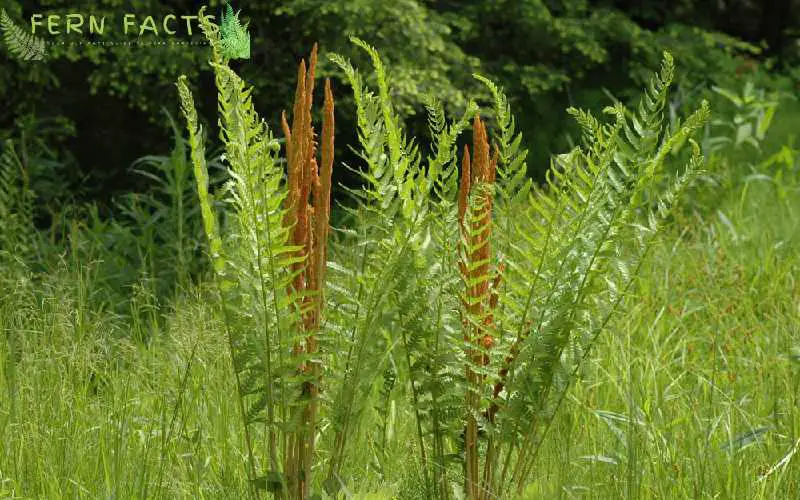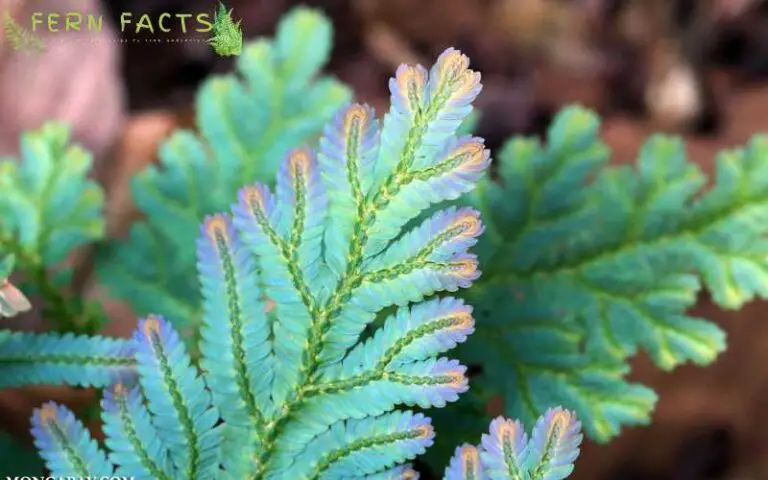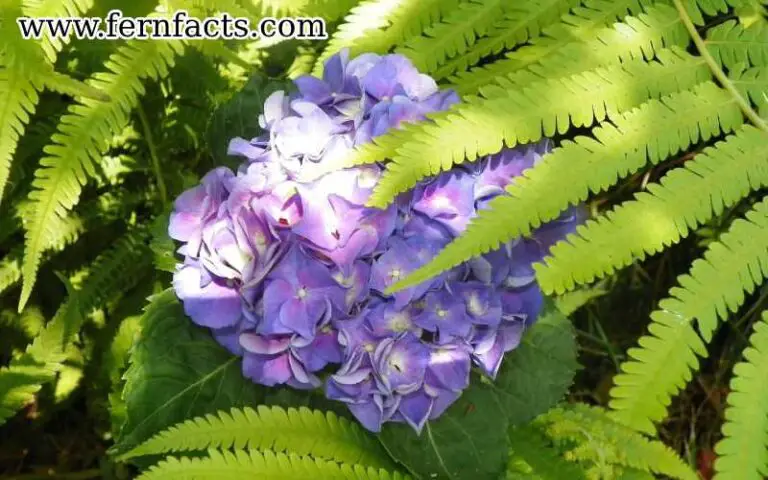How to Plant and Grow Cinnamon Fern
Cinnamon ferns are one of the easy and low-maintenance ferns to plant and grow. If you are a beginner or you want to grow any kind of fern In the garden, then these Cinnamon ferns are the best for you to choose.
With simple tricks and tips, you will be able to maintain these ferns thriving in your garden. Therefore, in this article, I am going to illustrate the overview of Cinnamon ferns and their basic characteristics.
Later I will try to provide the planting times, planting care, and management so that you will get an overall idea of the plants. So let’s explore the topic thoroughly.
Overview of Cinnamon Fern

- Botanic name: Osmundastrum Cinnamomumm
- Common name: Cinnamon Fern
- Natural range: America, Asia
- Natural habitat: bogs, moist woodlands, swamps
- Plant: Perennial
- Soil: acidic soil, clay, sand, well-drained, moist
- Light: full to partial shade
- Height: around 1 to 3 ft
- Width: around 2 to 3 ft
- Fronds color: blue or green
- Season: colorful fall foliage
- USDA Zone: 3-9
- Propagation: division
Cinnamon ferns are known for their bright green color, foliage texture, and softness it. These ferns have densely matted wiry roots.
These ferns are mostly native to America and eastern Asia along with their natural habitats being woodlands, bogs, and swamps.
More than 70 million years ago its species was found on earth which makes these ferns one of the oldest ferns existing ever. They generate their breeding by producing spores.
Their spores can grow within a couple of weeks. This fern can grow up to 2 ft to 4 ft long with their arched green foliage.
Cinnamon Ferns grow and shine all the summertime, and turn yellow before dying in the winter seasons.
These Cinnamon ferns have also been used by First Nation tribes as a food source. And so, these ferns also contribute to medical purposes like cold remedies, gynecological issues, and snake bites as well.
Planting Time
To grow these cinnamon ferns, you need to plant these ferns at the correct time in the right location. You can get thriving cinnamon ferns by giving them the correct planting place and time.
Where to Plant Cinnamon Ferns
Before growing these ferns, you need to know the exact location of their planting or where to plant these ferns. So that you can give them a perfect atmosphere and environment to enhance.
Cinnamon ferns you can plant beside wet, moist areas like ponds, streams, and water gardens. In those places, they will get the correct atmosphere for growing as they are fond of moist areas. Additionally, you can also grow these ferns in alkaline soils, shaded borders, or woodland areas.
These ferns are not available in the garden store or local nursery shop for purchase. If you want to have a collection of Cinnamon ferns at your house, then you can find them in the wild.
Even some online stores could be another option to get these ferns easily.
How and When to Plant Cinnamon Fern
Similarly, before planting your Cinnamon Fern, you need to know how and which seasons you should plant them while understanding their growing season in mind.
Spring and early fall are their growing seasons, therefore, you need to plant these Cinnamon ferns during spring or early fall seasons.
For planting purposes, you need to dig a hole slightly bigger so that the root ball can get into the hole thoroughly and also get enough space to grow properly.
After placing them in the hole, fill the hole with left soil, compost matter, and water them properly. If you plant Cinnamon ferns on the ground, then try to give a three-inch distance from each fern so that they will get enough individual space to accommodate.
However, this fern usually takes several years to grow fully adult plants or be established. When these will become established, they can naturalize themselves with your garden.
Plant Care and Maintenance
After planting these ferns at your house, you need to manage and maintain these ferns thoroughly. Therefore, let’s look at the steps that you need to follow to care for and maintain these Cinnamon ferns.
Light
Cinnamon ferns prefer partial to full shade thriving in nature. That’s why you need to provide them with a place where they can get bright enough with filtered subways coming through the window. These will give your ferns a ravishing appearance. However, they can even tolerate full sun or afternoon sun exposure, if their soil is well moist and hydrated.
Soil and Water
In their natural habitats, these ferns grow in streambeds. Nonetheless for your indoor and outdoor landscape, you need to plant this fern with a moist, rich humus acidic to average soil.
They can handle standing water but the soil needs to have a well-drained system. Otherwise, they might face rotten roots. Try to give your plants water once a week by understanding the soil conditions.
Especially during the drought or cold seasons, you have to water them regularly and keep their soil moist. Otherwise under watering can lead your plants to have brown and crispy forms gradually.
Temperature and Humidity
Cinnamon ferns are usually the winter season that can deal with frigid winters under zone 3. They can adjust any kind of temperature until their soil is moist and hydrated.
Additionally, in the Southern region, try to keep your Cinnamon ferns away from the direct light during their growing season, particularly from the afternoon sunlight and temperatures.
On the other hand, humidity is not the main issue for these ferns, they can adapt well to any kind of humidity around the atmosphere
Fertilizer
Like other ferns, you also need to give them fertilizer to boost their growth. You can mix the soil with organic compost before planting them anywhere.
If your soil texture is poor or doesn’t have enough rich nutrients then you can add nutrients in the ratio of 20:20:20 balanced fertilizer during the spring seasons which is also their growing season.
These extra nutrients will help and assist your fern to grow gradually. You can also use slow-release fertilizer if you observe your ferns are sensitive to the direct high nutrients.
Slow-release ferns will help to keep the plant’s soil fertilized for a longer period which gives them an ultimate benefit.
Pruning
You can cut off their dead fronds to increase their growth during the growing season. You can also cut or trim the yellow leaves from the ground in the early spring which contributes to their new growth.
Make sure you don’t cut or prune any green newly grown fronds which might harm your plant growth.
Potting and Repotting Cinnamon Ferns
Cinnamon ferns need a pot deeper and larger container, you may use 2 inches bigger pots than the previous one. It will help to stimulate their growth and help them to spread.
Similarly, try to select a container or pot with holes and a proper drainage system. Later try to find a shady place with a bright area where they can be protected from heavy winds.
After that, fill the pot with your new mixer soil with organic compost and replant your cinnamon ferns there. Keep in mind that indoor potted fern needs consistency of watering and fertilizing than the outdoor, ferns landscape in your garden.
Additionally, try to fertilize your ferns once a month by following the label instructions on the packaging.
Pests and Problems
These Cinnamon Ferns are not much affected by insects, bugs, pests, or any problems although these ferns are deer-resistant ferns means they will help your favorite garden away from deer encounters.
Moreover, they are very easy-growing ferns for you without having much difficulty.

How to Do Propagating of Cinnamon Ferns
You can easily grow plenty of new plants by the division of your Cinnamon ferns from their roots. The ultimate peak time for propagation is in the mid to late springtime.
During that time, you can dig up the whole plant from the pot or ground. If you want to wear gloves for more precautions, you can do that as well. After that, divide the roots from the main plants with any trowel or knife. Try to make sure each part has the same sort of roots.
Then you have to replant every section into a pot or container or your garden land. After replanting your Cinnamon ferns try to locate them in a place where they can get partial shade until their new growth begins.
- Find Out More About Caring for and Cultivating Austral Gem Fern.
Recap
On a final thought, Cinnamon ferns are the low-maintenance ferns that need less attention and care.
Therefore, being a new plant lover or busy scheduled fern lover, you can grow and plant that fern at your house without giving much effort and time to them.
With only a few caring steps and maintenance, you will be able to thrive these ferns at your house which gives you a beautiful greenery appearance to observe.







